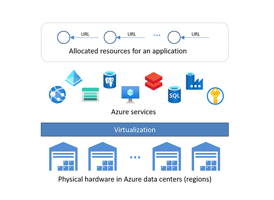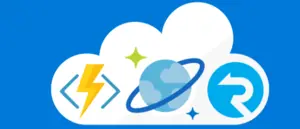Azure Content
5 Advantages to Using Azure Firewall Over Azure Network Security Groups
Network security in Microsoft Azure can be handled either by Network Security Groups, which is free, or Azure Firewall, which is a paid feature. Azure Firewall is often worth it for its ability to more granularly manage network traffic. In this article, I cover the advantages of Azure Firewall to help you decide whether it’s worth the investment for your organization.
Azure OpenAI in Action
Dive into the exciting world of Azure Open AI! This article breaks down how Microsoft is changing the game with AI, making it super user-friendly for businesses. Learn how you can start and what use cases will have high benefits.
Data Security in AI Development: Best Practices with Azure OpenAI
This article discusses the importance of data security in artificial intelligence (AI) development, the risks involved, and best practices with Azure OpenAI. It also delves into advanced techniques to help protect AI-driven systems and data integrity.
Power Platform Connectors Publishing, Certification, and Deployment
The article outlines how creators of Power Platform custom connectors can share their connectors around the globe using Power Automate, Power Apps, and Azure Logic Apps. It details the structured certification process, from packaging and validating connectors to conform with Microsoft's guidelines, to documenting and submitting these for inclusion in the official connector gallery. The process, while technical and geared towards professional developers, is accessible to those willing to learn the necessary command-line utilities.
Microsoft AZ-900 Exam Preparation: Mastering Azure Fundamentals
Embark on your Azure journey with the AZ-900 exam. This guide provides an in-depth look at the exam structure, preparation strategies, and resources to master Azure fundamentals and pave your way in the cloud technology world.
Azure OpenAI QuickStart Guide
Join me in this concise video tutorial where I demonstrate how to deploy a new Azure OpenAI resource within an existing Resource Group. Watch as I deploy two powerful language models, GPT-4 Turbo and GPT-3.5 Turbo, and then walk you through a quick setup in the Azure AI Studio Chat Playground. By the end, you'll learn how to configure and interact with these models to harness the power of Azure's AI capabilities for your applications.
Microsoft AI-900 Exam Preparation: Azure AI Fundamentals
Embark on a journey to validate your foundational knowledge of artificial intelligence (AI) and machine learning with the Azure AI-900: Azure AI Fundamentals exam. This certification paves the way for exploring AI workloads, machine learning principles, and Azure AI capabilities, empowering you to stay ahead in the evolving tech landscape.
Comparing AI Chat Solutions: Bing Chat, Bing Chat Enterprise, Microsoft 365 Copilot, and Azure OpenAI
Compare the features, benefits, and drawbacks of AI chat solutions including Bing Chat, Bing Chat Enterprise, Microsoft 365 Copilot, and Azure Open AI custom solutions. Explore how these innovative platforms use AI to transform communication and boost workflow efficiency.
Azure Services for Developers: Exploring the Key Components and Capabilities
Dive into the world of Azure Services for developers with this insightful article. Uncover the essential components and capabilities, from Azure App Service to Cognitive Services. Explore how developers can harness these tools to build powerful applications, enhance productivity, and drive innovation in the cloud computing landscape.
Power Platform Connector Building Blocks
In this third article of the "Power Platform Connectors A to Z" series, discover the basic building blocks for creating custom connector definitions, including how to use and configure OAuth, create actions, define parameters, group operations with tags, construct requests with input and output parameters, and provide examples for easier testing and validation.
Azure Cosmos DB: Scalable and Globally Distributed Database Solution
Azure Cosmos DB enables developers to build highly responsive, scalable applications by distributing data across multiple regions. With support for multiple data models and automatic scaling, Azure Cosmos DB provides a flexible, efficient database solution for modern applications.
Using Your Own Data With Azure OpenAI
Adding your own data to Azure OpenAI will allow you to ground it to your specific documents for accurate answers on any given subject. This article takes you through that process via Azure AI Studio, then shows you how to perform REST API calls to enable its use in Power Automate and Power Apps.










